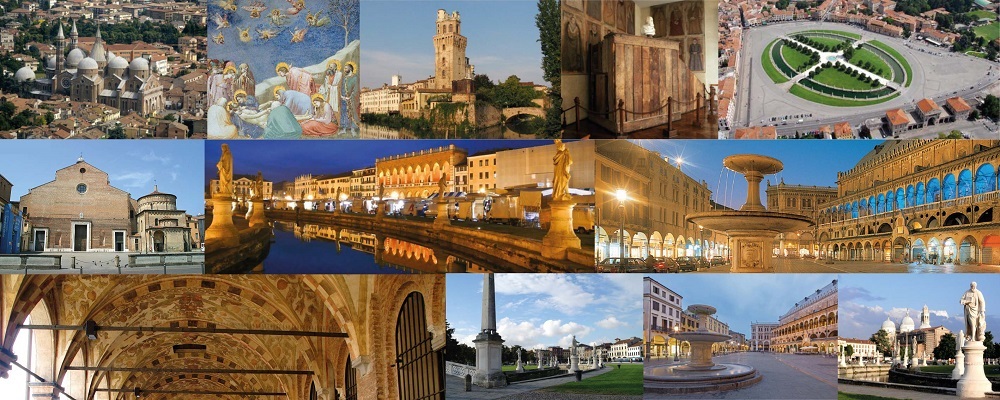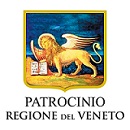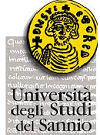 SORROUNDINGS AND A BIT
SORROUNDINGS AND A BIT 
Euganean Hills
The Euganean Hills Regional Park was the first park established in the Veneto region. It protects a vast and surprisingly rich territory in which over 1400 plant species are concentrated, or about 1/6 of Italian flora! To be explored on foot or by bicycle, the Euganean Hills offer a succession of strong feelings, changing panoramas, fragrant views in every season, recreational activities, picnic areas, and enchanting places of faith and poetry. Regardless of the direction you come from, the soft outline of the hills draws the skyline of the province. Monte Venda rises up 601 metres above sea level, while the other 85 hills have an average height of 219 metres. The particular volcanic origin and climatic conditions created unique places in the Euganean Hills where very different and nearly unthinkable vegetation and fauna live in close contact in this hilly environment. The chestnut woods protect fresh and deep undergrowth scented with musk, blueberries, and laburnum. The southern facing slopes are dotted with spontaneous orchids, brooms and other species which love the dry conditions.

Arquà Petrarca
This small town, sheltered in the green silence of the Euganean Hills, has lived through more than 2000 years of history but now remains shrouded in the Middle Ages. There is something magical about the atmosphere which surrounds Arquà Petrarca, a quality which one believes could be found in the very soul of the poet himself, Francesco Petrarch, who chose to spend the last years of his life here, and something which since the fifteen hundreds has sought to preserve itself from the modern era, enshrouded in the dense woods and glades of the area. The town has changed little since then. Once known simply as Arquada, today it bears the name of the poet whose house and final remains are still preserved here. At the centre of the square from which all the town spreads forth the body of the poet rests in a striking monument: a red marble arch from Verona of clearly pre-Christian inspiration, adorned with a 15th century bust of the poet.
Petrarch's house remains of course the main cultural attraction for the visitor to this artistic city. It was constructed on land apparently given to him by Francesco da Carrara of Padua, and was his home from 1370 until 1374, writing, reading and studying, immersed deep in the countryside of beech and chestnut trees, with only his daughter Francesca and his cat for company. The house has undergone several periods of restoration, and yet still preserves its original quiet and charm: the great poet's chair, writing desk and library are still imbued with the spirit of his thoughts and immortal works.
Other noteworthy places for the visitor include the parish church, originally constructed in the 11th century and remodelled in the 17th, which houses a Palma il Giovane, a 14th century polyptych, and medieval frescoes, the oratory of the Holy Trinity, which dates back to the 12th century and was extended in the 14th, and, opposite this, the Loggia del Vicari.



Montagnana
The medieval flavour of Montagnana is perhaps the most well-preserved in the Veneto, and surely one of the most charming in Europe. The breathtaking backdrop of the Euganean Hills draws the eye to the robust history of the town. And robust in a literal sense, with its solid terracotta buildings. The walls appear to suddenly erupt from the green plain, standing out against the sky like one of the monuments in the town's own main square: 2 km of fortifications, studded with 24 towers, 4 gates and a grassy moat/ditch enclose the ancient town within its neverending past. In fact here at Montagnana the Middle Ages are not so much a remote period as an 'eternal summer', which 'shall not fade/Nor lose possession of the fair' it possesses, the medieval beauty which it proudly shows to the world. The 'eternal summer' is most prominent in September, when the traditional Palio or medieval fair takes place and the 10 comuni della Scodosia compete in traditional games. The walls of this splendid city of art were constructed by Ezzelino da Romano and from 1405 enlarged and reinforced by the Carraresa family and later by the Venetians. All around the perimeter we encounter magnificent edifices such as the Porta Legnano, also known as the Fortress of the Trees', still preserving the original 13th century wooden doors, and the castle of San Zeno, both from the period of Ezzelino, which today is home to the City Museum. In addition there is the Cathedral, built between the 15th and 16th centuries over the previous Romanesque basilica, which houses Veronese's Transfiguration, and a large altar, attributed with all likelihood to Sansovino. The traces of Venetian domination are visible in the grand palaces and patrician houses. Moving outside the city walls we can also find Palazzo Pisani, an excellent example of Palladian architecture.

Monselice
Inhabited since prehistoric times, the Roman Mons Silicis, named after the prized stone quarries which furnished the Empire and later the Venetians with their raw building material, is a multi-faceted city lying southwest of Padua. The air and landscape are alive with the Middle Ages, and allow the imagination to wander freely through the age of chivalry, duels, knights and damsels - as in every medieval town, the deeds and legends of the past are handed down to every new generation, thus preserving the flame of the imagination as much for the inhabitants as for visitors. Of course the town offers much of the Renaissance as well, and indeed successive periods, and yet nonetheless the imposing presence of the past mingles effortlessly with the present: the medieval cobbled streets contain elegant modern shop windows, blending in with perfect harmony. The dominant voice in this harmony of palazzi, baroque monuments and new edifices was the Fortress, which also unites the ruins of the castle and indeed the spirits of the lovers Jacopino da Carrara and Judith. The impregnable city walls, which protected Monselice until the 19th century, slowly grew under the innumerable and various rulers of the city, from the Longobards to Ezzelino, from the Carraresi to the Venetians. Today, little remains of these walls in the aftermath of modern urban redevelopment and the opening up of the city, but their noble and ruined façade still invites discovery.



 PROMOTED BY
PROMOTED BY








































